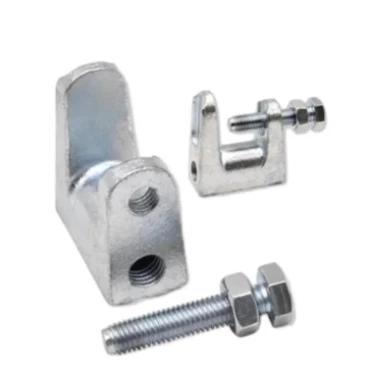Ara . 15, 2024 08:48 Back to list
chemical bolt anchor
Understanding Chemical Bolt Anchors An Overview
In the realm of construction and engineering, the reliability and strength of anchors are paramount to the safety and durability of structures. Among various anchoring solutions, chemical bolt anchors have emerged as a highly effective option for securing loads in concrete and masonry materials. This article delves into the advantages, applications, installation methods, and considerations regarding chemical bolt anchors.
What Are Chemical Bolt Anchors?
Chemical bolt anchors, often referred to as chemical anchors, consist of a steel bolt that is set into a drilled hole filled with a two-part epoxy or other resin-based adhesive. This adhesive cures and hardens, creating a strong bond between the bolt and the surrounding material. The process allows for the transfer of loads efficiently and effectively, reducing the risks associated with traditional mechanical anchors.
Advantages of Chemical Bolt Anchors
1. High Load Capacity Chemical anchors provide exceptional load-bearing capabilities, making them suitable for heavy-duty applications. The adhesive bond formed in the hole ensures that the forces are distributed evenly, resulting in enhanced pull-out and shear resistance.
2. Versatility These anchors can be used in various base materials, including concrete, brick, and steel. Their adaptability makes them ideal for a wide range of applications, from installing structural elements to mounting fixtures.
3. Reduced Tension Failure Unlike mechanical anchors that rely on expansion force, chemical anchors do not suffer from tension failure as easily. This makes them more reliable in environments where vibrations or dynamic loads are present.
4. Corrosion Resistance Many chemical anchors come with galvanized or stainless-steel components, improving their resistance to corrosion. This is particularly important for outdoor applications or environments where moisture is a concern.
5. Minimal Drilling Depth Due to their design, chemical anchors often require less drilling depth compared to traditional anchors, which can be advantageous in terms of saving time and material when installing large numbers of anchors.
Installation Process
The installation of chemical bolt anchors involves several steps to ensure a secure and effective bond
chemical bolt anchor

1. Preparation of the Hole Start by drilling a hole of the appropriate diameter and depth in the base material. Ensure that the hole is clean and free from debris, dust, and moisture.
2. Injecting the Adhesive Using a suitable caulking gun, inject the two-part adhesive deep into the hole. It is essential to fill the hole adequately without leaving air pockets, as these can compromise the bond strength.
3. Inserting the Bolt Immediately after injecting the adhesive, insert the steel bolt into the hole. Rotating the bolt slightly can help ensure that the adhesive spreads evenly around it.
4. Curing Time Allow the adhesive to cure for the manufacturer-recommended amount of time. This curing period is critical for achieving the desired bond strength before applying any load to the anchor.
5. Load Testing Before utilizing the anchor in a load-bearing capacity, conducting a load test can provide confirmation of its strength and functionality.
Considerations When Using Chemical Bolt Anchors
While chemical anchors offer numerous advantages, several factors should be considered
- Temperature Sensitivity The curing process of the adhesive can be affected by temperature. Ensure that the installation is carried out within the recommended temperature range to avoid issues with bond strength.
- Material Compatibility Not all adhesives are suitable for every type of base material. It is vital to select the right type of adhesive compatible with the surfaces being bonded.
- Environmental Conditions In environments with extreme conditions, such as high humidity or exposure to chemicals, select adhesives that are specifically designed for those scenarios to ensure longevity and performance.
Conclusion
Chemical bolt anchors represent a reliable, robust solution for construction and anchoring needs. Their unique benefits, including high load capacity, versatility, and ease of installation, make them a preferred choice among engineers and contractors. By understanding the proper installation techniques and considerations, users can leverage chemical anchors to enhance the safety and integrity of their projects. Through continued advancements in adhesive technology, the future of chemical bolt anchors looks promising, paving the way for even more innovative applications in construction and beyond.


